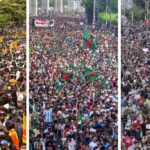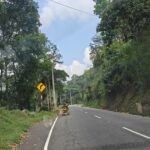I got a call from a friend in the US who had worked in Nepal fifteen years ago. She had just read the piece on the increasing number of students who obtain No Objection Certificates (NOC) from Department of Education to study abroad. She wondered how Nepalis could afford this. I explained how Nepal has changed over the past fifteen years in terms of consumption and spending. I thought why not use this elaborate conversation in writing this week’s Nefview.
In fiscal year 2023/24, 112,593 students received NOCs with the highest number of 34,731 heading to Japan! Interestingly, in 2020-21, it was Australia where 66,636 students went to study. Therefore, it is clear that people are going where they can work; education is secondary. The Nepal market for Australia in 2019 was estimated to be USD 2 billion! If we take an average spending of USD 30,000 per year, then the annual expenditure would be around USD 3.3 billion. Considering the number of students going abroad just in the last three years, we are looking at USD 10 billion spent each year as the number of students keeps increasing. However, the Nepal Rastra Bank reports state only USD 571 million was spent last year.
This naturally raises the question: Where does the rest of the money come to fund education if it is not remitted out from Nepal? First, it is the students who fund their studies themselves by working. This is evidence worldwide when we we see Nepali students working in restaurants across the US, UK, Europe, Japan or Australia. Second, with every four out of five Nepali households having someone abroad, informal remittances are also getting routed for this purpose. The transformation of Nepali economy over the last two decades have been fueled by remittances, increasing prices of stock as well as real estate. This has fueled consumption which has been responsible for the GDP increasing six folds in the past twenty years. One of the facts that I keep repeating ad nauseum is that 85% of Nepalis live in their own house, which means they do not have to pay rent like many other people in South Asia. This raises disposable income available for consumption. Consequently, people can pay high duties for vehicles, similar to those in Singapore. Despite these high duties, 27% of Nepalis own vehicles, the highest in South Asia.
Real estate price in Nepal are very high and comparable with some of the expensive cities around the world. For instance, if one would take the area of Durbar Marg, about 100 acre or 800 Ropanis (8 ropanis to an acre) of land would be valued at USD 8 billion! That is nearly a fifth of Nepal’s GDP. Similar price structures can be calculated for 100 ropanis (a ropani is 5,476 sq feet) of prime land in places like Surkhet. People often liquidate some real estate whenever they need to make payments for education or jobs abroad. This is a crucial behavioral perspective to understand that I often repeat to people who are new to Nepal.
The Nepal stock market, which is just thirty years old, has a market capitalization of USD 33 billion. Last week, its transactions crossed USD 170 million in a day. People who invested fifteen twenty years ago liquidate their stocks to have cash for their children’s education. Shares can be bought and sold online, with 1.5 million women and 2.1 million men engaged in trading. The percentage of women participation in stock market is the highest in South Asia.
Nepalis’ spending has also increased as we see more women actively participating in economic activities. Thirty years ago, it was rare to see group of women dinning at restaurants and taking leisure trips with friends or families. Women are now driving spending decisions. With practically every family having someone outside Nepal, travel has become easier. It is easy to book airline tickets, transportation, and hotels. I still remember these being a nightmare before internet proliferated. With so many students abroad, families travel for their graduation and visits. The US Embassy in Nepalis perhaps one of the highest per capita processing centers in the world with interview time slots coming up a year later. Similarly, the visa processing centers of VFS are among the busiest in the region.
Likewise, the narrative of development in Nepal is evolving. Nepal Living Standard Survey (NLSS IV) 2022-23 recalibrated the poverty line to reflect the country’s evolving economic landscape, including changes in consumption patterns, inflation, and the rising aspirations of its people. Compared to the old poverty line of NPR 19,261 set in the 2010-11 survey, NLSS IV raised the bar to NPR 72,908. This adjustment showed that 20.27% of the population now falls below the poverty line, which is a significant increase from an estimated 3.57% using the old threshold. This shift calls for a parallel change in policies, such as developing measures of prosperity that go beyond traditional poverty metrics. By aligning its policies promoting prosperity, Nepal can respond to the aspirations of its people and create a more prosperous society.
Sujeev is the founder CEO of beed. He leverages over 25 years of experience in diverse fields and geographies to advise, lead and inspire. With comprehensive networks in Nepal’s public, private, civil and diplomatic sectors, Sujeev is a trusted business and policy advisor and respected strategic thinker. From economies of developing countries to economies of human beings, he moves across different worlds, with his passion for the Himalayas being the axis.





